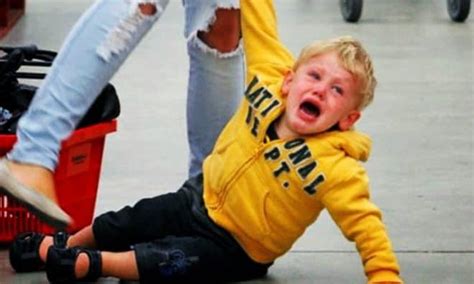
A dog named Finn is thriving after his owner, identified only as Mallory, escaped an abusive relationship, a transformation captured in a poignant video highlighting the positive impact of a safe environment on both human and animal. The viral video, shared on TikTok, shows Finn’s fearful demeanor before the escape and his subsequent joy and affectionate behavior in Mallory’s new, safe home.
Mallory’s experience underscores the interconnectedness of domestic abuse and animal welfare, revealing how animals often become victims alongside their owners. The video, viewed millions of times, has sparked a conversation about the importance of recognizing and addressing the needs of pets in abusive households, as well as the healing power of companionship.
Before escaping the abusive situation, Finn displayed signs of anxiety and fear. Mallory recounted in the video’s captions that Finn would often hide and appeared withdrawn. The video contrasts these earlier scenes with footage of Finn playfully interacting with Mallory, cuddling, and generally exhibiting a happy and relaxed demeanor in their new home. This stark difference illustrates the profound impact of a stable and loving environment on an animal’s well-being.
“He’s just a completely different dog,” Mallory stated in an interview about Finn’s transformation. “It’s like he knows we’re both safe now.” This statement encapsulates the central theme of the video: the shared experience of trauma and the subsequent journey towards healing for both Mallory and Finn.
The video has also brought attention to the resources available for victims of domestic abuse who are also concerned about the safety of their pets. Organizations like the Animal Welfare Institute and the National Coalition Against Domestic Violence offer programs and support to help ensure the safety and well-being of animals in such situations. These resources often include emergency shelter for pets, financial assistance for veterinary care, and legal support to help owners keep their pets safe during and after escaping an abusive relationship.
Mallory’s story, amplified by the viral video, serves as a powerful reminder of the often-overlooked impact of domestic violence on animals. It also highlights the resilience of both humans and animals in the face of adversity, and the importance of seeking help and creating a safe environment for healing. The video has resonated with many viewers who have shared their own experiences of escaping abusive situations with their pets, further emphasizing the need for greater awareness and support for victims of domestic violence and their animal companions.
The viral video, initially shared on TikTok, quickly spread across other social media platforms, garnering millions of views and sparking widespread discussion. Many viewers expressed their support for Mallory and Finn, sharing their own experiences with domestic violence and animal abuse. The comments section of the video became a space for sharing resources and offering encouragement to those who may be in similar situations.
Animal welfare organizations have also praised Mallory for sharing her story and raising awareness about the issue of domestic violence and its impact on animals. These organizations have used the video as an opportunity to educate the public about the resources available for victims of domestic violence and their pets, and to advocate for stronger protections for animals in abusive households.
The video also highlights the importance of recognizing the signs of animal abuse and neglect. Animals in abusive households may exhibit a range of behavioral changes, including fear, anxiety, aggression, and withdrawal. They may also suffer from physical injuries, such as bruises, cuts, and broken bones. It is crucial for individuals who suspect that an animal is being abused to report it to the appropriate authorities, such as the local animal control agency or law enforcement.
In many jurisdictions, animal abuse is a crime, and perpetrators can face criminal charges, including fines, imprisonment, and restrictions on owning animals in the future. It is important for individuals to be aware of the laws in their area and to take action to protect animals from abuse and neglect.
Mallory’s story also underscores the importance of creating a supportive network for victims of domestic violence. Victims of domestic violence often feel isolated and alone, and they may be hesitant to seek help for fear of retaliation from their abuser. It is crucial for friends, family members, and community members to offer support and encouragement to victims of domestic violence, and to help them connect with resources that can provide them with safety and support.
Domestic violence is a complex issue that affects people of all ages, genders, and backgrounds. It is a pattern of abusive behavior that is used by one partner to control and dominate the other partner. Domestic violence can take many forms, including physical abuse, emotional abuse, verbal abuse, sexual abuse, and financial abuse. It is important for individuals to be aware of the signs of domestic violence and to seek help if they are experiencing abuse.
There are many resources available for victims of domestic violence, including shelters, hotlines, counseling services, and legal aid. These resources can provide victims with safety, support, and guidance as they navigate the process of escaping an abusive relationship. It is important for victims of domestic violence to know that they are not alone and that help is available.
Mallory’s story is a testament to the resilience of the human spirit and the power of the bond between humans and animals. It is a story of hope and healing, and it serves as a reminder that even in the darkest of times, it is possible to find light and happiness.
In-depth Analysis and Background Information
The intersection of domestic violence and animal abuse is a well-documented phenomenon. Studies have shown a strong correlation between violence against humans and violence against animals in the same household. This connection is often referred to as “The Link.” Abusers may target animals for several reasons, including to control and intimidate their partners, to isolate them from support networks, and to prevent them from leaving the relationship.
Animals are often used as pawns in abusive relationships. Abusers may threaten to harm or kill pets to keep their partners from leaving or to punish them for perceived transgressions. They may also abuse animals directly in front of their partners to instill fear and control. This form of abuse can be particularly devastating for victims, who may feel powerless to protect their beloved pets.
The presence of animals in abusive households can also create barriers to victims seeking help. Victims may be reluctant to leave the relationship if they are concerned about what will happen to their pets if they leave them behind. Many domestic violence shelters do not accept animals, which can further limit victims’ options.
In recent years, there has been growing recognition of the importance of addressing the needs of animals in domestic violence situations. Many domestic violence shelters are now partnering with animal welfare organizations to provide safe housing for pets. There are also programs that provide financial assistance for veterinary care and legal support for victims who are trying to keep their pets safe.
The video of Finn’s transformation is a powerful example of the positive impact that a safe environment can have on both humans and animals. It highlights the importance of recognizing the interconnectedness of domestic violence and animal abuse, and of providing support for victims and their pets.
The story of Mallory and Finn also underscores the importance of early intervention in cases of animal abuse. Early intervention can help to prevent animal abuse from escalating and can protect both humans and animals from further harm. It is crucial for individuals who suspect that an animal is being abused to report it to the appropriate authorities.
In addition to reporting animal abuse, individuals can also take steps to support animal welfare organizations and to advocate for stronger protections for animals. They can volunteer their time, donate to animal shelters, and contact their elected officials to urge them to pass laws that protect animals from abuse and neglect.
Expanded Context
The issue of domestic violence and animal abuse is not limited to any particular demographic or geographic area. It affects people of all ages, genders, races, and socioeconomic backgrounds. It is a global problem that requires a multifaceted approach to address.
In addition to providing support for victims and their pets, it is also important to address the root causes of domestic violence and animal abuse. This includes promoting healthy relationships, teaching children about empathy and respect, and challenging societal norms that condone violence.
Education is also a key component of preventing domestic violence and animal abuse. By educating the public about the signs of abuse and the resources that are available, we can empower individuals to take action and to help those who are in need.
The story of Mallory and Finn is a reminder that even in the face of adversity, it is possible to find hope and healing. It is a story that should inspire us all to work together to create a world where all humans and animals are safe and free from abuse.
The impact of social media on raising awareness about domestic violence and animal welfare cannot be overstated. Platforms like TikTok, Instagram, and Facebook have become powerful tools for sharing stories, connecting with resources, and advocating for change. The viral nature of these platforms allows stories like Mallory’s to reach a vast audience, sparking conversations and inspiring action on a scale that was previously unimaginable.
However, it is also important to be mindful of the potential downsides of social media. Sharing personal stories online can make individuals vulnerable to online harassment and abuse. It is crucial to take steps to protect one’s privacy and security when sharing information online. It is also important to be critical of the information that is shared on social media and to verify the accuracy of claims before sharing them with others.
Despite these potential drawbacks, social media remains a valuable tool for raising awareness about domestic violence and animal welfare. By using these platforms responsibly, we can help to create a more informed and compassionate society.
The role of legislation in protecting animals in domestic violence situations is also critical. Many states have laws that allow pets to be included in protective orders, providing legal protection for animals in abusive households. These laws can help to ensure that victims can safely remove their pets from abusive situations without fear of retaliation from their abusers.
In addition to protective order laws, some states have also passed laws that make it a crime to threaten or harm an animal in order to intimidate or control a domestic violence victim. These laws send a clear message that animal abuse will not be tolerated and that abusers will be held accountable for their actions.
However, there is still much work to be done to strengthen animal protection laws across the country. Many states lack adequate laws to protect animals in domestic violence situations, and there is a need for greater enforcement of existing laws.
By advocating for stronger animal protection laws, we can help to create a safer and more just world for both humans and animals.
The long-term effects of domestic violence and animal abuse can be profound and far-reaching. Victims of domestic violence may suffer from physical injuries, emotional trauma, and mental health problems. They may also experience difficulty with relationships, employment, and housing.
Animals that have been abused may also suffer from long-term physical and emotional problems. They may be fearful, anxious, and aggressive. They may also have difficulty trusting humans and may require specialized care and training to overcome their trauma.
It is important to provide comprehensive support services for victims of domestic violence and animal abuse to help them heal from their trauma and rebuild their lives. These services may include counseling, therapy, support groups, and legal assistance.
By investing in these services, we can help to break the cycle of violence and create a more hopeful future for all.
FAQ
1. What is the main point of the news article?
The article highlights the positive transformation of a dog named Finn after his owner, Mallory, escaped an abusive relationship. The video showcasing Finn’s change in demeanor from fearful to joyful has gone viral, raising awareness about the interconnectedness of domestic violence and animal welfare.
2. How did the owner, Mallory, escape the abusive situation?
The article does not provide specific details about how Mallory escaped, but it focuses on the aftermath – her successful relocation to a safe environment with Finn.
3. What resources are available for victims of domestic violence who have pets?
Organizations like the Animal Welfare Institute and the National Coalition Against Domestic Violence offer programs and support, including emergency shelter for pets, financial assistance for veterinary care, and legal support. Many domestic violence shelters are also partnering with animal welfare organizations.
4. What signs of animal abuse should people be aware of?
Signs of animal abuse can include fear, anxiety, aggression, withdrawal, unexplained injuries (bruises, cuts, broken bones), and neglect (lack of food, water, or veterinary care).
5. What is “The Link” mentioned in the article?
“The Link” refers to the well-documented correlation between domestic violence and animal abuse within the same household, indicating that those who abuse humans may also abuse animals, and vice versa.
The pervasive nature of trauma induced by abuse extends far beyond the immediate physical harm. For animals like Finn, the psychological scars can manifest as deep-seated anxiety, fear-based aggression, and an overall diminished quality of life. The concept of “learned helplessness” is often observed in these cases, where the animal has been conditioned to believe that it has no control over its environment, leading to a state of passivity and resignation. Overcoming this requires specialized intervention, often involving positive reinforcement techniques and a patient, understanding caregiver who can gradually rebuild the animal’s trust and confidence.
Similarly, human survivors of domestic violence face a multitude of challenges, ranging from physical injuries and chronic pain to post-traumatic stress disorder (PTSD), depression, and anxiety. The insidious nature of emotional abuse can erode self-esteem and create a distorted sense of reality, making it difficult for survivors to recognize their own worth and make informed decisions about their safety and well-being. The road to recovery is often long and arduous, requiring access to comprehensive support services, including counseling, legal assistance, and safe housing.
The video of Finn’s transformation serves as a poignant reminder of the interconnectedness of all living beings and the profound impact that trauma can have on individuals and their animal companions. It also highlights the resilience of the human spirit and the capacity for healing and growth, even in the face of unimaginable adversity. By sharing their stories and advocating for change, survivors like Mallory are helping to break the silence surrounding domestic violence and animal abuse, and creating a more compassionate and just world for all.
The legal landscape surrounding animal protection in domestic violence cases is constantly evolving, with many states enacting new laws and strengthening existing ones. These laws often address issues such as:
- Including pets in protective orders: This allows victims to seek legal protection for their pets, preventing abusers from harming or threatening them.
- Allowing animals to be removed from abusive homes: This ensures that animals can be safely removed from homes where they are being abused or neglected, even if the victim is hesitant to leave.
- Mandating reporting of animal abuse: This requires certain professionals, such as veterinarians and social workers, to report suspected cases of animal abuse to the authorities.
- Increasing penalties for animal abuse: This sends a message that animal abuse will not be tolerated and that abusers will be held accountable for their actions.
- Providing funding for animal shelters and domestic violence shelters that accept pets: This helps to ensure that there are adequate resources available to care for animals that have been rescued from abusive homes.
While significant progress has been made in recent years, there is still much work to be done to strengthen animal protection laws and ensure that all animals are safe from abuse. Advocacy groups and animal welfare organizations are working tirelessly to educate lawmakers and the public about the importance of protecting animals in domestic violence situations.
The ethical considerations surrounding the ownership of animals in abusive relationships are complex and multifaceted. On one hand, animals are sentient beings with their own inherent rights and deserve to be protected from harm. On the other hand, they are often considered property under the law, which can make it difficult to remove them from abusive homes.
Balancing these competing interests requires a nuanced approach that prioritizes the safety and well-being of the animal while also respecting the rights of the owner. In cases where animal abuse is suspected, authorities must carefully investigate the situation and make a determination about whether the animal is in imminent danger. If so, the animal should be removed from the home and placed in a safe environment.
However, it is also important to consider the emotional bond between the animal and the owner. In some cases, the animal may be the victim’s only source of comfort and support. Removing the animal from the home could further traumatize the victim and make it more difficult for them to leave the abusive relationship.
Therefore, it is essential to provide comprehensive support services for victims and their pets, including counseling, legal assistance, and safe housing. By working together, we can help to ensure that all animals are safe from abuse and that victims of domestic violence have the resources they need to rebuild their lives.
The economic costs of domestic violence and animal abuse are staggering. Domestic violence costs the United States billions of dollars each year in medical expenses, lost productivity, and criminal justice costs. Animal abuse also has significant economic consequences, including the cost of investigating and prosecuting animal cruelty cases, caring for abused animals, and providing veterinary services.
In addition to these direct costs, domestic violence and animal abuse can also have indirect economic effects. For example, children who witness domestic violence are more likely to experience behavioral problems and academic difficulties, which can lead to lower earnings later in life. Animals that have been abused may require specialized care and training, which can be costly for animal shelters and rescue organizations.
Investing in prevention and intervention programs can help to reduce the economic costs of domestic violence and animal abuse. These programs can provide victims with the support they need to escape abusive relationships, protect animals from harm, and prevent future violence.
The societal implications of domestic violence and animal abuse are far-reaching. These forms of violence can undermine the fabric of communities and create a climate of fear and distrust. They can also contribute to a cycle of violence, as children who witness abuse are more likely to become abusers themselves.
Addressing domestic violence and animal abuse requires a concerted effort from individuals, families, communities, and governments. We must work together to promote healthy relationships, teach children about empathy and respect, and challenge societal norms that condone violence.
By creating a more compassionate and just society, we can help to break the cycle of violence and create a better future for all.
The psychological impact on children who witness animal abuse in the context of domestic violence is profound and multifaceted. Children exposed to such trauma may experience a range of emotional and behavioral problems, including:
- Anxiety and depression: Witnessing animal abuse can trigger feelings of fear, helplessness, and sadness.
- Post-traumatic stress disorder (PTSD): The trauma of witnessing animal abuse can lead to flashbacks, nightmares, and other symptoms of PTSD.
- Aggression and violence: Children who witness animal abuse may learn that violence is an acceptable way to resolve conflict.
- Difficulty with empathy and compassion: Witnessing animal abuse can desensitize children to the suffering of others.
- Low self-esteem: Children who witness animal abuse may feel worthless and unloved.
- Problems with relationships: Children who witness animal abuse may have difficulty forming healthy relationships with others.
It is crucial to provide children who have witnessed animal abuse with access to specialized mental health services. These services can help children to process their trauma, develop coping skills, and build resilience.
The role of animal shelters and rescue organizations in addressing domestic violence and animal abuse is essential. These organizations provide a safe haven for animals that have been rescued from abusive homes. They also offer a range of services, including:
- Veterinary care: Animal shelters and rescue organizations provide medical care for animals that have been injured or neglected.
- Shelter and care: They provide a safe and comfortable environment for animals to live in while they are waiting to be adopted.
- Adoption services: They work to find loving homes for animals that are ready for adoption.
- Education and outreach: They educate the public about animal abuse and the importance of animal welfare.
- Collaboration with domestic violence shelters: Many animal shelters and rescue organizations partner with domestic violence shelters to provide safe housing for pets.
Supporting animal shelters and rescue organizations is a critical way to help animals that have been affected by domestic violence and animal abuse.
The need for cross-training between domestic violence and animal welfare professionals is increasingly recognized as a crucial step in effectively addressing the interconnected issues of domestic violence and animal abuse. This cross-training can equip professionals with the knowledge and skills to:
- Identify signs of animal abuse and domestic violence: By understanding the indicators of both forms of abuse, professionals can more effectively identify cases that might otherwise go unnoticed.
- Provide appropriate support to victims and animals: Cross-trained professionals can offer tailored assistance that addresses the specific needs of both human and animal victims.
- Collaborate effectively across disciplines: Training promotes better communication and coordination between domestic violence advocates, animal welfare workers, law enforcement, and other relevant professionals.
- Develop comprehensive safety plans: Cross-training allows for the creation of safety plans that consider the well-being of both the victim and their animal companions.
- Advocate for policy changes: Professionals with a broader understanding of the issues can advocate for more effective laws and policies to protect victims and animals.
By investing in cross-training, we can empower professionals to better serve victims of domestic violence and animal abuse and create safer communities for all.









